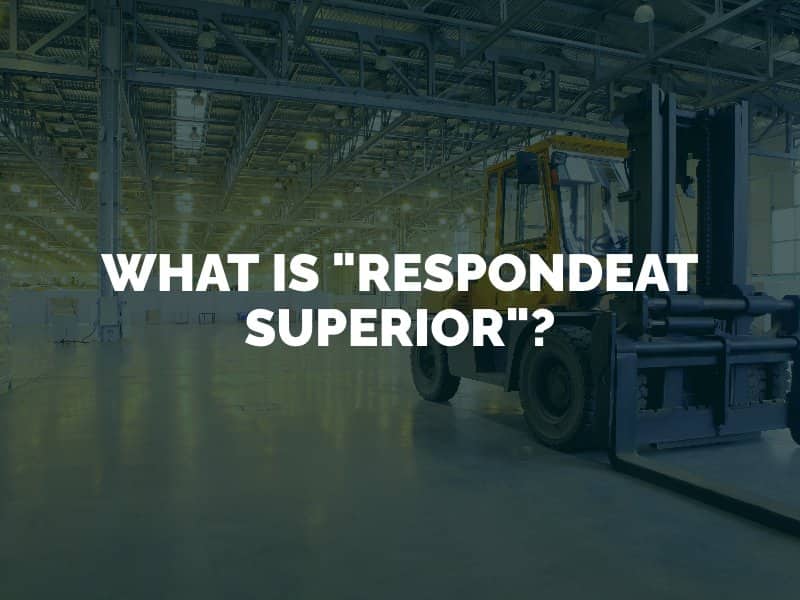Imagine you are on the road in your car when suddenly a delivery truck driver sideswipes you, causing you to veer off of the road. This results in significant damage to your vehicle, so you are concerned about who will pay for the cost of repairs. You may assume that the driver is fully responsible, but the respondeat superior liability theory may allow you to hold that driver’s employer responsible for your damages.
Not many people are familiar with what respondeat superior means, so in this article, we will provide more context for this liability theory.

Through a respondeat superior action, plaintiffs can hold employers responsible for the actions of their employees. In order to apply this in practice, you must show that the employee who caused the accident was engaged in work at the time of the accident that caused your damages. This entails proving that they were acting in the course of their job and that the conduct they were engaged in was being done in an effort to advance their employer’s business.
Even if you are harmed by the negligence of an employee, it is not guaranteed that the respondeat superior action will be applicable to your personal injury claim. It is important to note that employers are only liable for the employees’ actions when those actions are taken while the employees are “on the clock.” Furthermore, even when an employee is on the clock, their actions must fall within the scope of their typical job responsibilities as they have been described by their employer.
If these criteria are not met, the employer will likely not be liable under respondeat superior actions. For example, if you assume that the driver presented in the introduction of this article was carrying goods to a location defined by their employer during a work shift, the employer would be liable for the accident if a respondeat superior action is used. This is because the employee was on the clock and engaged in conduct that was within the details of their job responsibilities.
Conversely, if a retail store employee decides to harm one of the store’s patrons because they suspect that they were shoplifting, the assault would not be part of their job duties. Therefore, their actions would be their own responsibility, and the employer would not be liable. To get more clarity on whether the person who caused an accident that harmed you met the respondeat superior criteria, speak to a reputable personal injury lawyer in Denver.
Understanding how respondeat superior actions works is important, especially in instances where an employee who caused an accident does not have the means necessary to pay your damages. This is because a business entity is more likely to have higher volumes of insurance. When you file a claim against them, there is a higher likelihood of you being capable of recovering damages that fully compensate you for your actual losses.
To speak to a lawyer who understands how to implement a respondeat superior action, contact Fang Law Firm. You can reach us by submitting the contact form on this page.